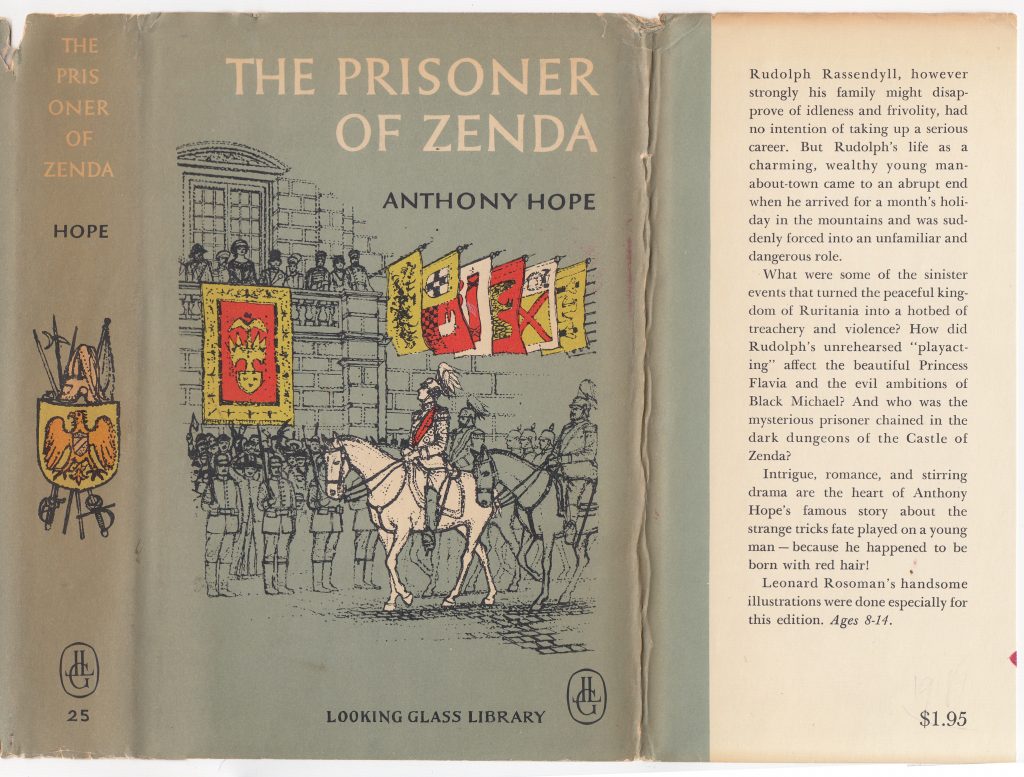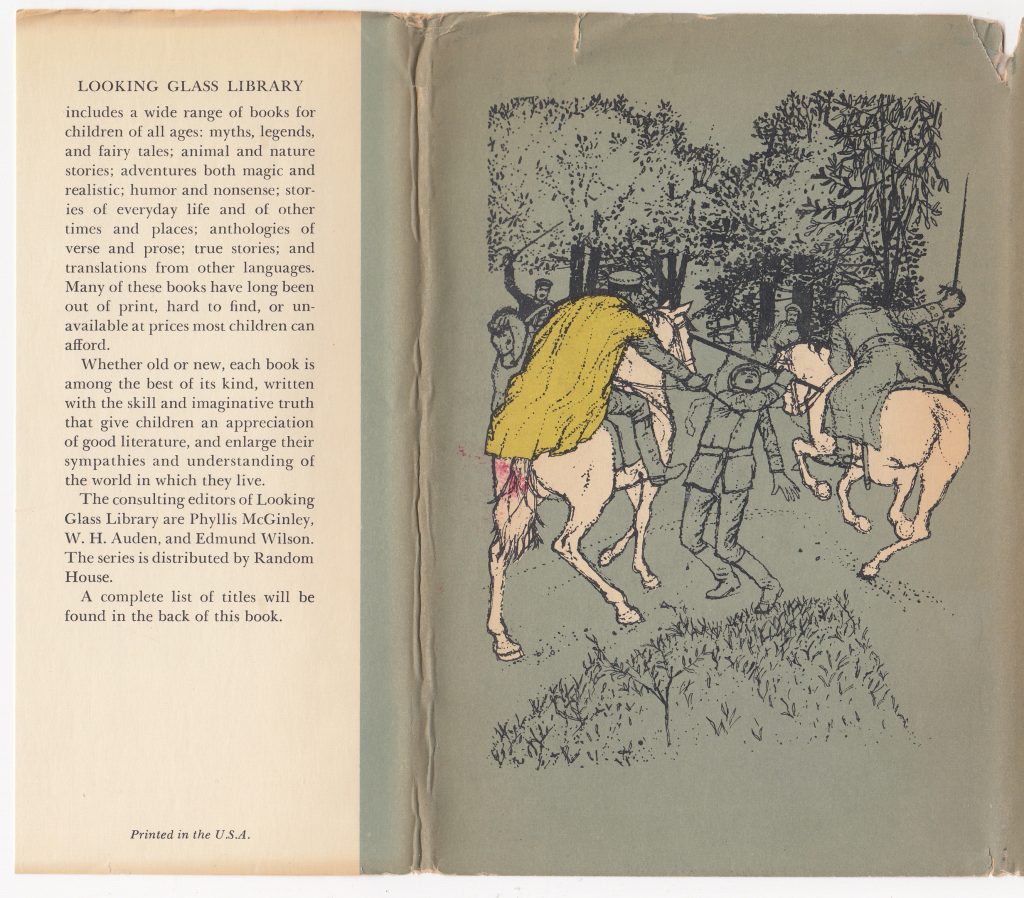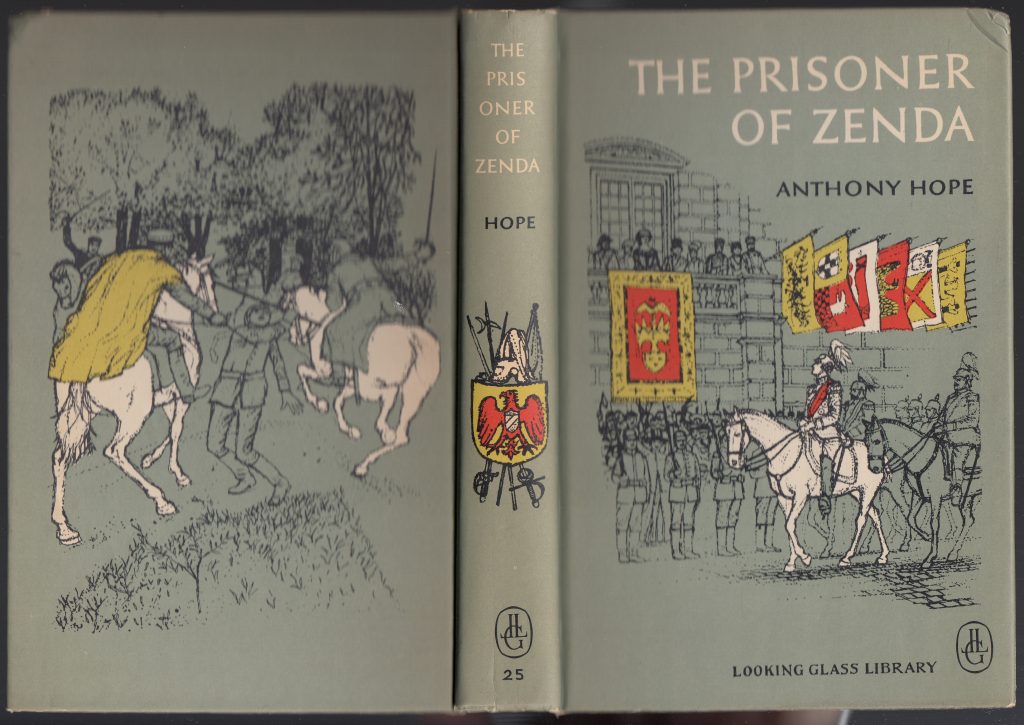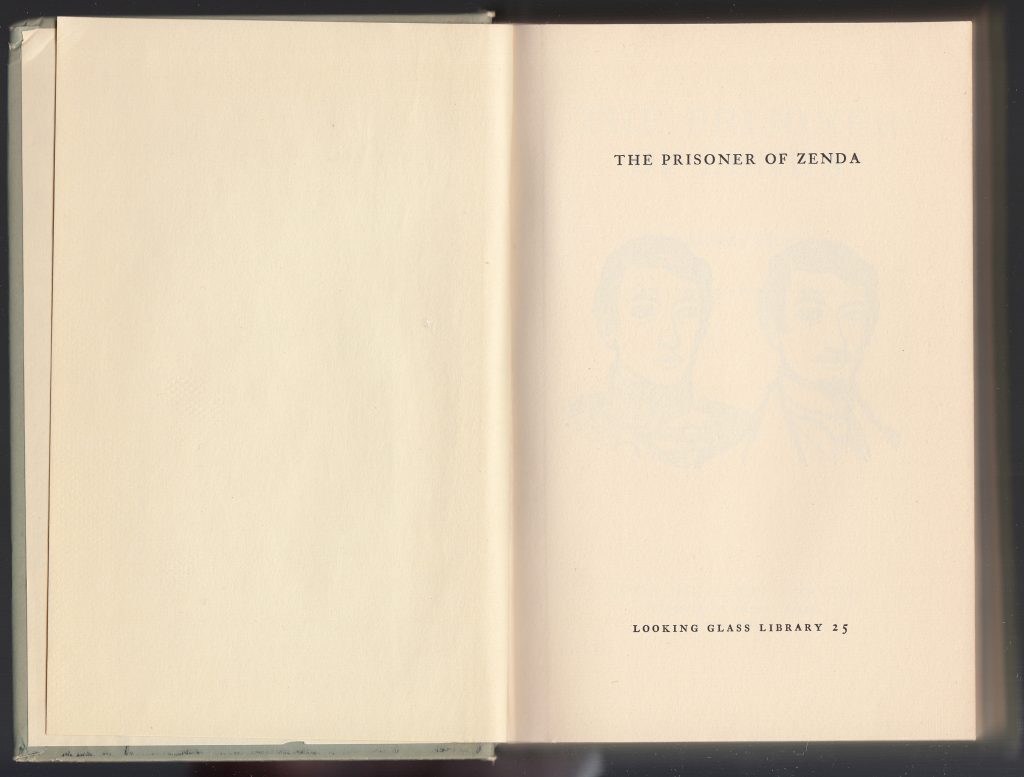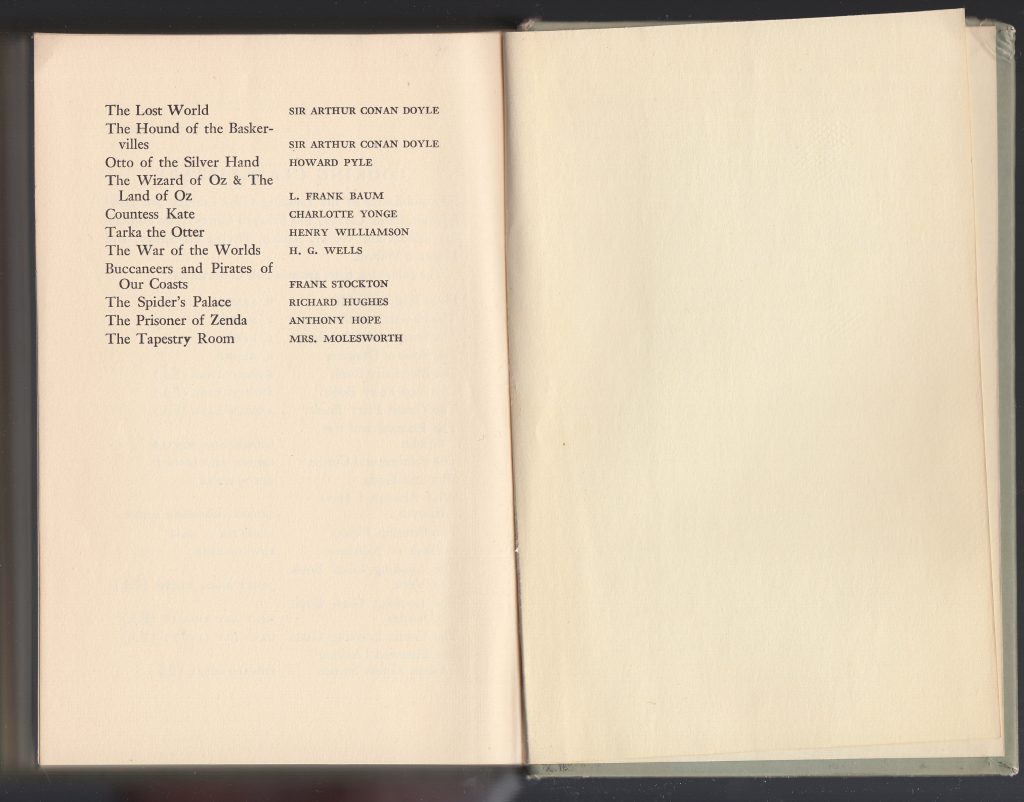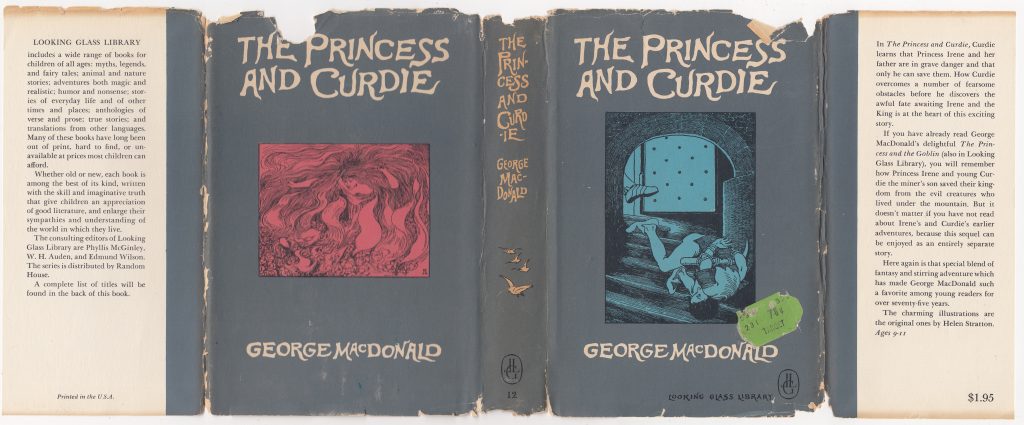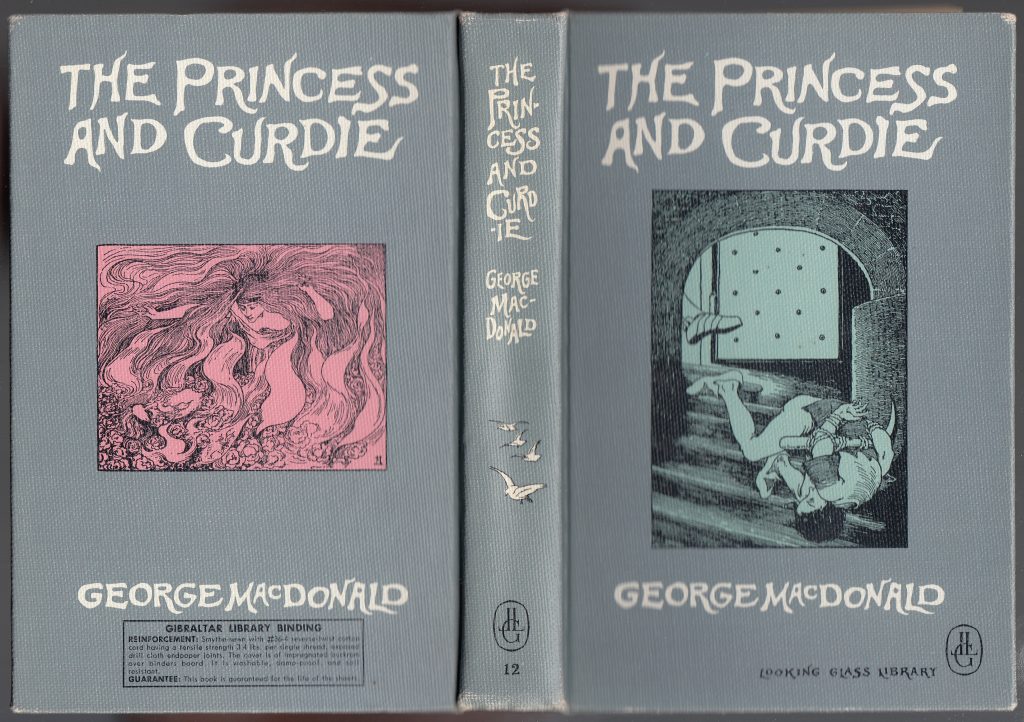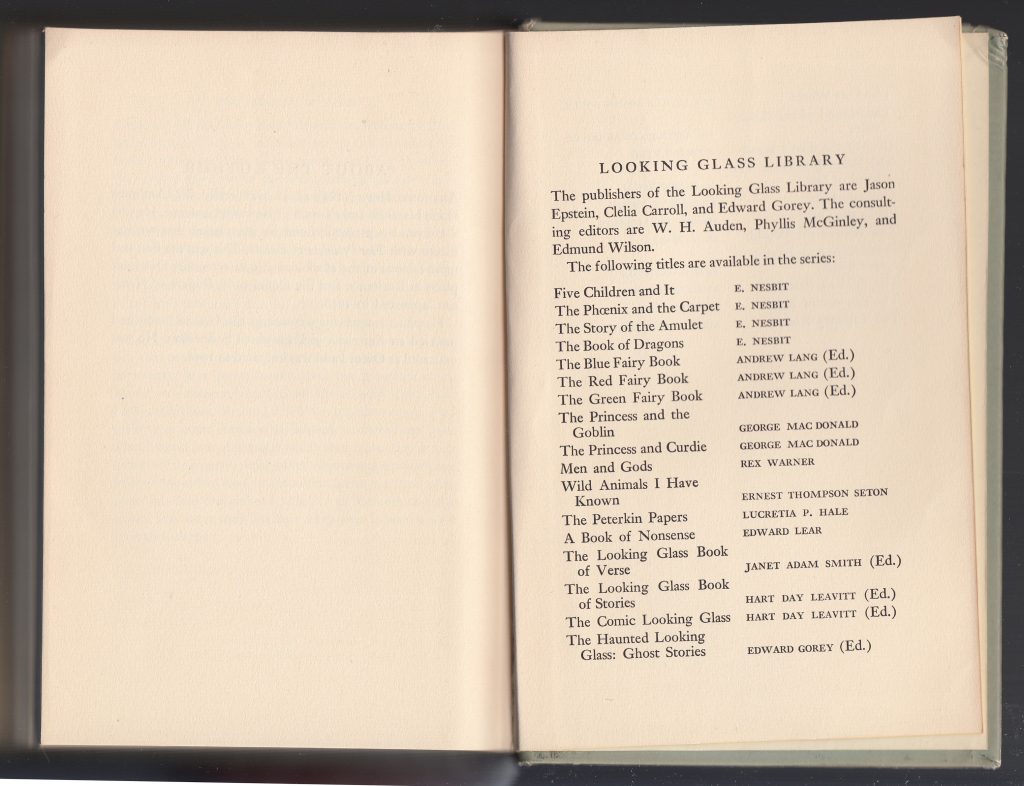Epstein & Carroll Associates, Distributed by Random House (New York, US)
Series dates: 1959-1961
Size: 5″ x 7.5″
Epstein & Carroll Associates was a division of Random House founded in 1959 and managed by Jason Epstein, Clelia Carroll, and the illustrator Edward Gorey. It published 28 titles in the Looking Glass Library, and only those titles, between 1959 and 1961. A few reprints were issued through the 1960s, and some titles reissued in the 2010s.
Epstein was a top editor at Doubleday and architect of their Anchor Books quality paperback line. He left Doubleday in 1958 (in protest of Doubleday declining to publish a book he was promoting, Nabokov’s Lolita). Hired by Bennett Cerf at Random House, Epstein was given wide leeway to launch any publishing enterprise, as long as it did not directly compete with existing Random House publications. Clelia Carroll, also formerly of Doubleday, and Epstein developed the Looking Glass Library as a “children’s counterpart to Anchor Books.” The series would consist of substantive young adult hardcover reprint titles, all newly illustrated and mostly 19th-century classics by English authors. Another former Doubleday employee, illustrator Edward Gorey, joined the effort as the art director and illustrator of some of the series titles (he also apparently played a significant role in choosing titles for the series [source and source]). W.H. Auden, Phyllis McGinley, and Edmund Wilson were brought on as consulting editors. Random House would manufacture and distribute the books.
The Looking Glass Series was aimed at an older audience than Random House’s new Beginner Books series. Aimed at a pre-teen audience, Beginner Books consisted of new titles and was managed by Theodore Geisel (Dr. Seuss) and Phyllis Cerf. The plan, then, was to have the two series cover both the juvenile and young adult market.
The design and manufacture of the Looking Glass Library books were driven by the need to market the books to libraries. At the time, many libraries refused to purchase paperback books. Instead, a relatively cheap binding method known as paper-over-board (printed paper, glued to heavy cardboard bindings) was used instead of cloth to keep costs low. Another benefit was the ability to use the same artwork on the binding and dust jacket (a tradition with dust jackets back into the 19th century). This left the jacket-less book with a colorful and appealing cover.
The series ran into problems from the start, despite a stellar publishing staff. Inferior paper and crowded layouts in the initial ten titles, issued in 1959, led to poor reviews and poor sales. Those issues were fixed, but sales had not picked up by the fall of 1960 when the series price rose to $1.95 from $1.50. By 1961, the enterprise had ended (source: The Annotated Phantom Tollbooth, by Norton Juster, Knopf, 2011). 28 titles were issued in all.
Jackets for the series are unique to each title with illustrations by each book’s illustrator. Anthony Hope’s The Prisoner of Zenda has a 1961 publication date and is 25th of 28 titles in the series. The dust jacket spine is illustrated and includes the title, author, Looking Glass Library colophon, and series number (from 1-28; see list below). The jacket front includes the series name. A blurb for the title fills the front jacket flap along with a note about the illustrator and the price ($1.95).
The back of the jacket includes an additional illustration. The rear jacket flap contains a prospectus for the series.
The bindings, paper-over-board, replicate exactly the jacket front, spine, and back.
The half title page with title and series name and number.
An illustration faces the title page. This title is illustrated by Leonard Rosoman.
The copyright page with the library of Congress card number (as these books were marketed to libraries) and the 1961 copyright to Epstein and Carroll Associates. Printed by The Colonial Press, Inc, Clinton, Massachusetts.
The last pages in the book list titles in the series.
This copy of George MacDonald’s The Princess and Curdie is #12 in the series has the same general jacket design with two different illustrations, from the book, on the front and back.
The binding of this title repeats much of the jacket design on the binding itself. In this case, the book is bound in a substantial Gibraltar Library Binding which, along with better book layout and paper, was undoubtedly intended to increase sales to libraries (after poor reviews of the quality of the initial 10 series. The qualities of this library binding, in exquisite jargony verbiage, is indicated on the back of the book:
Reinforcement: Smythe-sewn with #36-4 reverse-twist cotton cord having a tensile strength 3.4 lbs. per single thread, exposed drill cloth endpaper joints. The cover is of impregnated buckram over binder’s cord. It is washable, damp-proof, and soil resistant. Guarantee: This book is guaranteed for the life of the sheets.
Titles in the Looking Glass Library (source)
1. Nesbit, E. Five Children and It. N.D. Illustrations by J.S. Goodall.
2. Lang, Andrew. Ed. The Blue Fairy Book. c1959. Illustrations by Reisie Lonette.
3. Macdonald, George. The Princess and the Goblin. N.D. Illustrations by Arthur Hughes.
4. Warner, Rex. Men and Gods. c1959. Illustrations by Edward Gorey.
5. Seton, Ernest Thompson. Wild Animals I Have Known, N.D. Illustrations by Ernest Thompson Seton.
6. Hale, Lucretia.P. The Peterkin Papers. N.D. Illustrations by Lucretia P. Hale.
7. Lear, Edward. A Book of Nonsense. N.D. Illustrations by Edward Lear.
8. Smith, Janet.Adam. The Looking Glass Book of Verse. c1959. Illustrations by Consuelo Joerns.
9. Gorey, Edward. Editor. The Haunted Looking Glass: Ghost Stories. c1959. Illustrations by Edward Gorey.
10. Doyle, Sir Arthur Conan. The Lost World. c1959. Illustrations by Gil Walker.
11. Nesbit, E. The Phoenix and the Carpet. N.D. Illustrations by J.S. Goodall.
12. MacDonald, George. The Princess and Curdie. N.D. Illustrations by Helen Stratton
13. Lang, Andrew. Ed. The Red Fairy Book. c.1960. Reisie Lonette.
14. Leavitt, Hart Day. Ed. The Looking Glass Book of Stories. c1960. Cover by Edward Gorey (?).
15. Pyle, Howard. Otto of the Silver Hand. N.D. Illustrations by Howard Pyle.
16. Baum, L.Frank. The Wizard of Oz & The Land of Oz. c1960. Illustrations by Rita Fava.
17. Yonge, Charlotte M. Countess Kate. N.D. Illustrations by Gwen Raverat
18. Nesbit, E. The Story of the Amulet. N.D. Illustrations by J.S. Goodall.
19. Williamson, Henry. Tarka the Otter. c1960. Illustrations by C.F. Tunnicliffe.
20. Lang, Andrew. Ed. The Green Fairy Book. c1960. Illustrations by Reisie Lonette.
21. Wells, H.G. The War of the Worlds. c1960. Cover and illustrations by Edward Gorey.
22. Stockton, Frank.R. Buccaneers and Pirates of Our Coasts. c1960. Illustrations by Bernard Krigstein
23. Hughes, Richard. The Spider’s Palace. c1960. Illustrations by George Charlton.
24. Nesbit, E. The Book of Dragon. N.D. Illustrations by H.R. Miller.
25. Hope, Anthony. The Prisoner of Zenda. c1960. Illustrations by Leonard Rosoman.
26. Doyle, Arthur Conan. The Hound of the Baskervilles. c1961. Illustrations by Gil Walker.
27. Mrs. Molesworth. The Tapestry Room. N.D. Illustrations by Walter Crane.
28. Leavitt, Hart Day. The Comic Looking Glass. 1961. Cover and illustrations byEdward Gorey.

